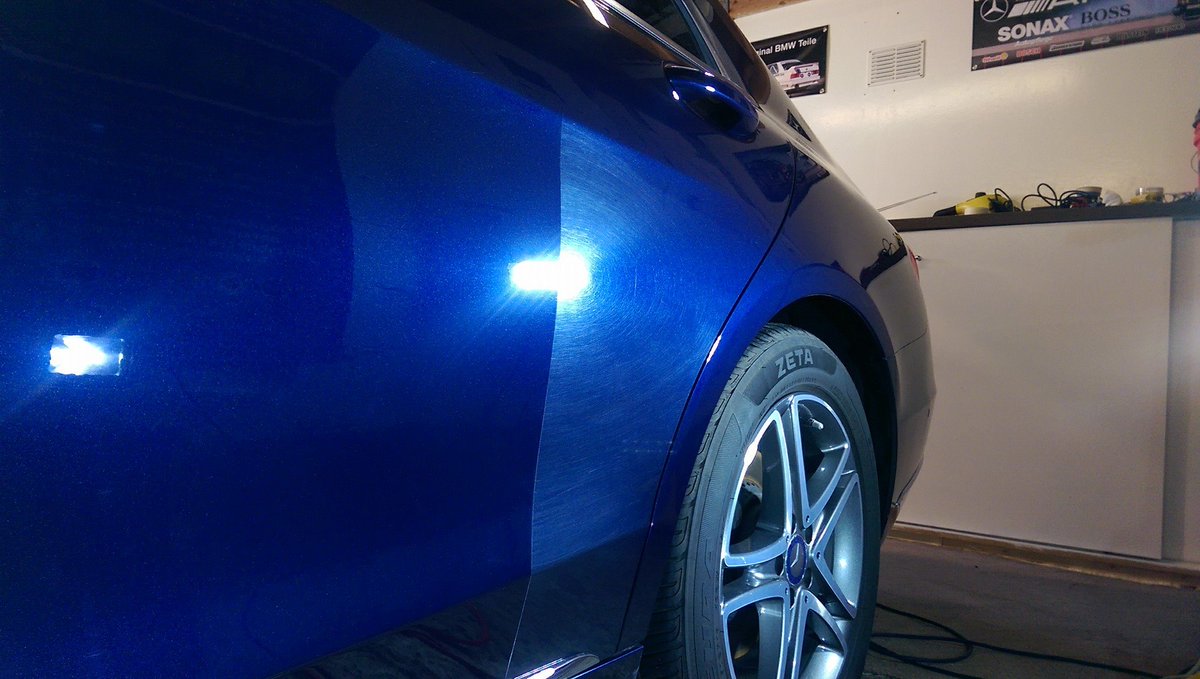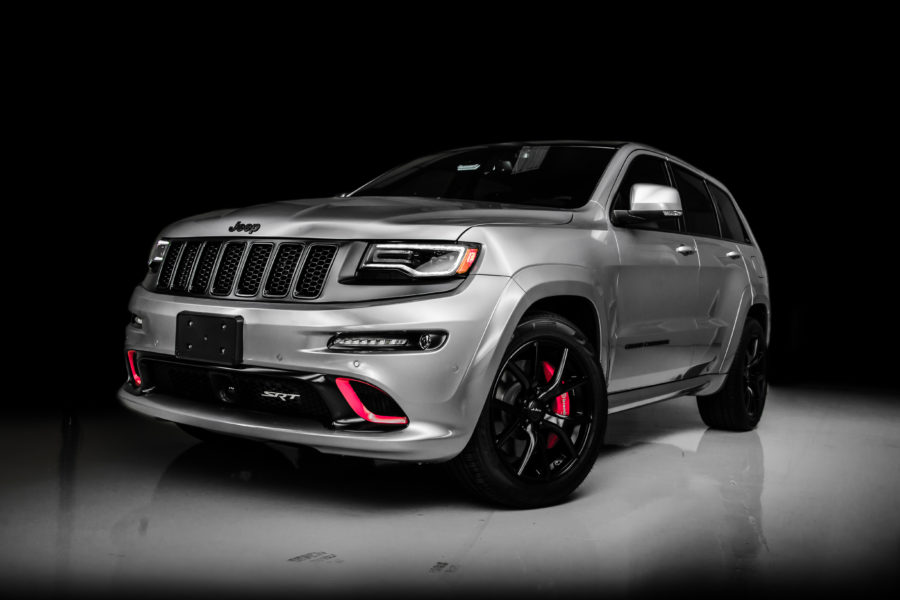Comparing Paint Protection of Car Waxes vs Ceramic Coats
Coke vs Pepsi, Yankees vs Red Sox, and In-N-Out vs Five Guys. These are just a few of the most iconic battles that fans and consumers across North America engage in daily to declare their ultimate allegiance. In the paint protection world, a similar yet slightly diluted battle exists – car wax vs ceramic coatings, which one is better?
Like all paint protection products, the purpose or goal of car wax and a ceramic coat are identical; to protect what’s underneath. How they go about accomplishing this task is night and day. The formulation of each is completely different, and for the most part, the longevity or life expectancy of the protective layer with each is just as diverse.
We have a saying here at Ceramic Pro – “wax is dead”. But that doesn’t mean wax does not have a purpose or is not a good paint protection option for some car owners. So, let’s take some time to compare a car wax or paint sealant versus a ceramic coating.
Does a Ceramic Coating Replace Wax?
It is typically assumed that a nano ceramic coating is a replacement for traditional wax. Although a coating will last about 10 times longer than traditional carnauba wax, it’s not necessarily a replacement. It is, however, a superior option for protecting the substrate or surface where it is applied.
Car wax is generally considered the entry level of paint protection products in the automotive world. The material itself can be infused in many different products including spray on wax, car wash shampoos and conditioners, and even synthetic wax that is added to factory paint sealants.
When it is applied to the car’s clear coat, it will bond on top of the surface, harden, and hold up against exposure to UV rays, light chemicals, road grime, and other contaminants. The expected longevity of automotive waxes can range from one month to a year.
The ceramic paint coating industry is just as diverse and complex as the car wax world, meaning there are multiple grades, formulations, application techniques, and expected longevity. In fact, there has recently been an explosion of ceramic wax products on the market.
The ceramic car coating industry starts with ceramic coating spray on products that act like a quartz or glass coating, but do not offer the same protective qualities or longevity as those that use nanotechnology.
If you are searching for a longer lasting, higher shine producing, and more user-friendly paint protection option, then using a professional ceramic coating is a good replacement for traditional car wax or these new ceramic wax products that are made for extended protection on car paint.
Does Wax or Ceramic Coating Offer Better Paint Protection?
To answer this question honestly, it is important to get down to the basic scientific principles of how each one works to protect a vehicles paint job. The goal of any protection product is to block potentially harmful contaminants or natural elements that can damage the cars factory paint work. The longer the product lasts, and the harder the material is when it has been cured, will usually result in a superior paint protection product.
Natural carnauba wax is derived from a palm tree that originates from the Brazilian rain forests. This natural occurring wax is secreted through the leaves to protect the palm tree from aggressive UV exposure, but allows the tree to absorb life-giving sunlight. Through the years, scientists and automotive chemists have fine-tuned synthetic car wax substances that can replicate the same natural protective qualities, that last longer and are easier to apply.
When any type of wax is applied to surface, it hardens on top, but does not penetrate the minor imperfections that are found with any porous material. Your average paint clear coat is comprised of multiple microscopic peaks and valleys on the car’s paint that can only be seen with advanced microscopic technology. These imperfections are smaller than a human hair but must be filled with a product to truly protect it from exposure.
The traditional car wax does not have this ability. As a result, it simply does not last if a product that can fill these imperfections to provide support and produce a stronger layer of protection. Here is a practical example to consider.
Let’s say for example that you are wading your feet in the ocean water at the beach. If your feet are directly on top of the sand, and your body is hit by a big wave, you are more likely to move. However, if your feet and the lower portion of your leg is underneath the sand, you’re going to be nearly impossible to budge simply because your body has leverage or support to combat the force of the wave.
Make sense? In the paint protection world, applying a nano ceramic coating on a vehicle’s paint is like sticking your feet and legs into the sand as the water is quickly approaching you. It provides added security and strength which reduces the potential of those harsh natural or chemical elements from penetrating the base surface, leading to oxidation, corrosion and eventually rust.
Which Prevents Swirl Marks Better – Ceramic Coat or Car Wax?
A swirl mark or spider-webbing as it’s often referred to in the detailing world, is caused bye tiny particles on the surface of a vehicle that are rubbed into the top layer. If you do not have a protective coating on your vehicle of car wax or a ceramic coating, the swirl marks will embed directly onto the topmost surface. On most cars and trucks made today that would be the clear coat of paint.

This is a classic example of swirl marks on car paint. On the right of the image, you’ll see what swirl mark damage looks like. On the left, is the result of paint correction. Notice how smooth the car’s paint looks?
To avoid damage to the clearcoat, and inevitable paint correction that follows, most professional detailers recommend applying a paint protection product. Whether you choose automotive wax, synthetic paint sealant, or any of the multiple grades of ceramic coatings, the key to preventing swirl marks is the strength of that coating.
The strength and durability of natural or synthetic car waxes is exceedingly difficult to judge on a scale. A simple fact is it’s a mystery how hard carnauba wax or synthetic wax is once it has cured. The main reason for that, at least what I would assume, is that it’s exceedingly difficult to assign a hardness due to multiple variables Including:
- The amount of wax applied
- The amount of wax removed once applied
- The percentage of ingredients within the car wax
- The condition of the paint surface prior to applying the wax
…and many other variables.
What Does a 9H Hardness Mean with Ceramic Coatings?
A genuine nano ceramic coating is grated on the pencil scale of hardness. This scale starts at zero and climbs to nine. The scale was created to test the hardness of graphite or pencil lead. However, it is also applicable to the hardness of the ceramic coating once it has fully cured. Most nano ceramic coatings have a hardness rating of 9H – which is the highest grade possible.
So, using the simple logic of determining prevention against swirl marks, ceramic coatings are far superior to any type of car wax on the market. But there is a catch. It’s a deep dark secret that many less than ethical businesses do not like to disclose.
There are several spray-on products that are classified or marketed as a “Ceramic Coating” but are formulated to replicate a lot of the physical attributes associated with a true nano ceramic coating. Some of these product qualities will include:
- Creating a super hydrophobic surface: This basically means making the surface that is coated slippery so that water, cooked eggs, even the spray bottle easily glide against the freshly coated surface. This is what’s known as a hydrophobic coating vs a ceramic coating.
- Enhanced shine: Another common product quality of ceramic coatings is their ability to provide added depth or shine to a glossy paint finish.
These traits can be replicated by using silicone or Teflon-based ingredients. While these are both considered ceramic in nature, they simply do not provide the protection qualities or offer the same level of hardness and longevity of a nano ceramic coating.
Nano coatings are highly concentrated formulas comprised of titanium dioxide, silica dioxide, and special carrier solvents. The nanotechnology infused in these formulas, and the proprietary percentage of the ingredients above, allows the coating to layer on top of each application. Any of the professional grade products can be applied up to 10 times and are backed and supported by lifetime warranties.
What’s the Cost Difference Between Car Wax and Ceramic Coatings?
To honestly answer this question, I would have to write about 10,000 words more in this article. Since most of us don’t have that time to find out a simple reality, let me sum up. The average do-it-yourself car enthusiast can purchase a spray on wax or paste wax for about $20.00 which will last about a year.
The car owner will have to remove the old layers of carnauba wax before applying a new one at least every three months using special shampoos, a clay bar, or other wax removal techniques. The other option is to have a professional detailer complete this service for you. When you add up everything the average cost for protecting your typical four door sedan is about $100 per year.
Ceramic coatings come in multiple grades, application techniques, and product quality. They are available in spray on form with infused SiO2 and TiO2 like a spray wax for about the same cost. There is a growing segment of do-it-yourself nano ceramic coatings which will require some prep work based on the condition of your vehicle that will cost you about $100 per bottle.
One bottle will coat a small two-door coupe. These DIY ceramic coatings will hold up for about 2 years before you will have to remove it by polishing off then reapplying. The cost of ownership of this type of ceramic coating average is about $200 per year when you factor in maintenance costs and using a maintenance ceramic coating spray to protect that coating.
A professional grade ceramic coating offers multiple levels of protection and are customized with packages to fit every budget and consumer need. Ceramic Pro 9H coatings are sold and applied by certified auto salons only, are supported with warranties, and offer specific protection qualities for the unique materials such as windows, wheels, plastic trim, and interior components.
The professional grade ceramic coating is the only paint protection product besides a paint protection film that is supported with a warranty by the manufacturer. They last longer, produce better protective qualities, and simplify the process of cleaning your vehicle.
What’s the Verdict – Car Wax versus Ceramic Coatings?
Taking care of your car is a job for some – and a passion for others. While there is a time and place for using carnauba wax to restore some life to older paints, modern paint jobs require advanced technology solutions. The modern nano ceramic coating like Ceramic Pro 9H is the superior solution car owners have been searching for years.
If you’re thinking about upgrading your automotive surface protection game to a premium level – at an affordable price, click the button below to receive a free estimate from an auto salon near you that offers professional ceramic coating service.






